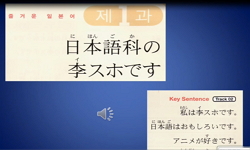불교문화가 아시아 문학에 미친 영향을 아시아 공통의 문학적 특성인 산문과 운문의 결합형식을 중심으로 하여 논하였다. 중국에 불교가 전래되면서 인도의 쟈타카 등의 영향으로 변문이 ...
http://chineseinput.net/에서 pinyin(병음)방식으로 중국어를 변환할 수 있습니다.
변환된 중국어를 복사하여 사용하시면 됩니다.
- 中文 을 입력하시려면 zhongwen을 입력하시고 space를누르시면됩니다.
- 北京 을 입력하시려면 beijing을 입력하시고 space를 누르시면 됩니다.
부가정보
국문 초록 (Abstract)
불교문화가 아시아 문학에 미친 영향을 아시아 공통의 문학적 특성인 산문과 운문의 결합형식을 중심으로 하여 논하였다. 중국에 불교가 전래되면서 인도의 쟈타카 등의 영향으로 변문이 생성되었고, 유선굴이라는 새로운 문체의 소설이 생성되었으며, 삼국유사 소재 향가의 산문과 운문의 결합형식은 변문이나 유선굴 등의 영향이라는 점, 향가는 형식적인 특성뿐만 아니라 내용․기능적인 측면에서도 변문과 공통된 특성을 보이고 있다는 점을 논하였다. 일본의 萬葉集 16권의 ‘有由緣雜歌’는 변문의 영향일 것이라는 점, 平安시대가 되면 大和物語 등에 ‘歌語’라는 산문과 운문의 결합형식이 성행하였다는 점, 그러나 일본의 경우 문학적 형식에서만의 수용일 뿐, 내용이나 불교포교라는 종교적인 목적에서의 수용은 이루어지지 않았다는 점이 특징임을 논하였다.
다국어 초록 (Multilingual Abstract)
This paper examined effects of Buddhist culture on Asian literature focused on combined form of prose and verse which was a common character of Asian literature. As Buddhism spread into China, transformational literary was developed in China, affected...
This paper examined effects of Buddhist culture on Asian literature focused on combined form of prose and verse which was a common character of Asian literature. As Buddhism spread into China, transformational literary was developed in China, affected from such as India's Jataka which was a combined form of prose and verse. Transformational literary generated a new literary style of novel called Yuseongul which was a combined form of prose and verse and had a great effects on Chinese literature. In Korea a verbal feature was found in Shilla's Wonhyo, Hyegong, and such Hyangg writers as Wolmyungsa and Youngjai. This tradition continued to Koryo's Gyunyeo. Works of Hyangga of combined form of prose and verse in Samgukyusa were affected from literary works of such transformational literary and Yuseongul and written at the stage of recording them. Hyangga had common character with transformational literary in not only stylish feature but also functional aspect. However, effects of pictorial aspect such as transformational symbol did not found in Hyangga. In Japan, a form of combination of backgroud tale and song beginning ‘Mukasi-ari(昔有)’ was found in ‘有由緣雜歌’ in Manyoshu Vol. 16. ‘Mukasi-ari(昔在)’, which could be considered as the same as ‘昔有’. Since ‘昔在’ was seen to be affected by transformational literary, ‘昔有’ was also seen to be affected by transformational literary. In 평안 period, the combined form of prose and verse such as ‘Utagatari(歌語り)' which explained the background of songs, were prevailed in Yamatomonogatari․Isemonogatari. Tales in 31volumes of Conzakumonogatari, which was estimably formed around 1120, were examined in relation to transformational literary in their structure and purpose, the fact of beginning the form of ‘今昔(Now is Past)’, intension of writing, and structural and substantial characters. Since Conzakumonogatari was thinly related to the combined form of prose and verse, examination was limited to poetic literatures. In case of Japan, the combined form was accepted only in the aspect of literary form but was not accepted either in subject matter or missionary purpose of Buddhism. Japanese were more interested in Buddhist pictures such as transformational symbol and independently developed pictorial volumes which drew literary works into pictures.
목차 (Table of Contents)
- 국문초록
- Ⅰ. 서 론
- Ⅱ. 산문과 운문의 결합형식
- 1. 인도의 쟈타카
- 2. 중국의 변문
- 국문초록
- Ⅰ. 서 론
- Ⅱ. 산문과 운문의 결합형식
- 1. 인도의 쟈타카
- 2. 중국의 변문
- 3. 한국의 향가
- 4. 일본의 고대시가
- Ⅳ. 결 론
- 參考文獻
-
동일학술지(권/호) 다른 논문
-
자연가를 통해서 본 오토모노 사카노우에노 이라쓰메(大伴坂上郎女)시가의 독자성
- 동아시아고대학회
- 사이토 아사코(斎藤麻子)
- 2008
- KCI등재
-
- 동아시아고대학회
- 李鍾學
- 2008
- KCI등재
-
- 동아시아고대학회
- 李永植
- 2008
- KCI등재
-
- 동아시아고대학회
- 문치웅
- 2008
- KCI등재






 eArticle
eArticle






